Enhancing from established roots
ITEA 4 will further build on its strong legacy from ITEA 3, which has proven successful in spawning excellent research and innovation projects by the ITEA Community. In this article, we take a look at the key achievements and successes which show the progress made on the ITEA 3 Challenges and illustrate the impact of ITEA 3 on the economy and society.
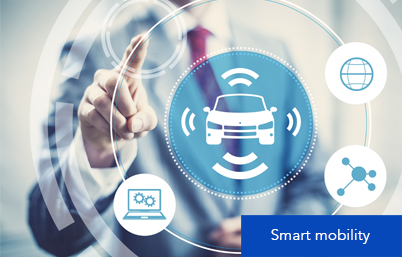
DANGUN
DANGUN developed a Traffic Jam Pilot function with autonomous capabilities and the technological deliverables have already been integrated into two experimental Renault ZOEs, which were transformed into computer-controllable automated driving vehicles. In February 2019, Hanyang University and LG demonstrated a self-driving car smoothly manoeuvring its way through the busy streets of Seoul, aided by and broadcast live on a 5G network. By 2035, the first robotaxi businesses are expected. Many companies are working on this, but work by Renault on DANGUN has laid the foundation by using the Tele-Operation System to control a driverless vehicle from the other side of the world – the first ever remote driving of this nature.


The results of DANGUN are an important component for the deployment of autonomous vehicles in the long term. Today, the technologies are part of our long-term intelligent vehicle perspective, included in the company’s roadmap in the domain.
DANGUN project partner and Corporate Expert on Autonomous Systems at the Research Division of Renault
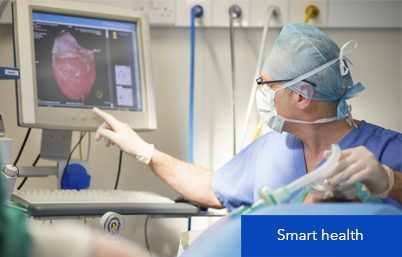
BENEFIT
BENEFIT aimed to support clinicians in selecting the optimal diagnostic and treatment pathway for patients. The project partners developed software analysis and imaging methods, navigation tools and a structured database that gathers patient and treatment information. These will help healthcare professionals before and during minimally invasive interventions by presenting quantified information, personalising models of diseased organs and implantable medical devices, and offering treatment alternatives that reduce costs and improve clinical decisionmaking. Based on this architecture, Philips has introduced new tools with significantly higher accuracy for the treatment of cranial aneurysms and liver tumours. It has also prepared a next step in healthcare, which is the adoption of artificial intelligence based on such quantified clinical data.




I am convinced that the worlds of surgical procedures and image-guided minimally invasive treatments will ultimately converge, enabled by innovations in real-time imaging systems, smart devices and software.
Business Group Leader Image Guided Therapy at Philips

FUSE-IT
FUSE-IT addressed the need for sustainable, reliable, user-friendly, efficient, safe and secure Building Management Systems in the context of Smart Critical Sites. The project solves the dilemma between efficiency and security in intelligent buildings. At the user level, a smart unified building management interface enables the daily monitoring and control of a building, while a full security management interface enables the supervision of both physical and logical security throughout the premises. Thanks to FUSE-IT, a malicious hacker wanting (for example) to take over a hospital’s heating, ventilation and air conditioning system can be stopped and both energy and lives can be saved!




Airbus CyberSecurity strives to be at the leading edge of innovation in fields which combine safety and security. Award-winning projects such as FUSE-IT show that we are moving in the right direction.
Head of Technology at Airbus CyberSecurity

ACOSAR
ACOSAR has developed the Distributed Cosimulation Protocol (DCP - a global standard), which focuses on the efficient integration of distributed real-time systems and simulation environments. The range of applications is wide and can, for example, reduce set-up and configuration time. The ACOSAR results have significant implications for the automotive industry and will lead to a shorter and considerably more flexible modular system development process for numerous industrial domains, as well as enable the establishment of new business models. Evaluation by means of demonstrators indicated vast potential savings; sports car manufacturer Porsche estimates that within a period of five years, the introduction of the DCP could save them between five and seven million euros.



I’m very proud to see the main project outcomes successfully implemented in the form of an industrially-accepted open Modelica Association Standard. The ITEA framework, with its well-implemented project initiation and execution processes, substantially helped ACOSAR to deliver on its promise.
Project leader and Innovation Manager at Virtual Vehicle Research GmbH

ACCELERATE
ACCELERATE took up the challenge of enabling European technology companies to adopt acceleration know-how by focusing on two goals: the transfer of knowledge on a massive scale and the introduction of the so-called validated learning process that systematically searches for a technology-market match. The ACCELERATE project partners created a platform that eases and facilitates interactions between start-ups and investors for business and product ideas or simply ideas that could be marketable. The platform is now the meeting point for 15 investors and 105 users registered as start-ups. The platform is currently hosting over 60 project ideas.





ACCELERATE was the first ITEA project for BEIA and enabled us to increase the awareness of telemetry systems among the community of start-ups in Romania, including internships for translating ideas from research to the market. Also, BEIA established a digital innovation hub around the ACCELERATE platform with the goal to foster new partnerships and smart communities by expanding its telemonitoring portofolio with IoT solutions for various verticals - GHG emissions, air quality monitoring system incorporating decision-making components, blockchain traceability applications for agri-food, renewable energy and smart cities.
ACCELERATE project partner and R&D and Innovation Manager at Beia Consult
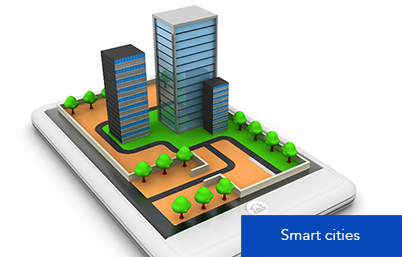
C³PO
C³PO has found ways for city planners and designers to consult citizens throughout the urban transformation process and thereby give citizens a better say in urban development. The aim of the project was to set up a common digital platform that connects all of the tools for collaborative urban development. This includes available (open) data sources, 3D models and visualisations as well as opinions and insights from citizens and interest groups. The project was strengthened by the participation of the cities of Brussels, Kortrijk, Kouvola and Oulu and the Municipality of Pendik (a district of Istanbul), which provided the perfect opportunity for trials.



One of the key aspects of our innovation projects like C³PO is the international cooperation with other innovation-minded actors in Europe and beyond, creating an ecosystem of partners and knowledge.
C³PO project leader and Coordinator External R&D and Innovation Programmes at Barco

SPEAR
SPEAR combines real-world production processes with digital twins in a simulation environment in order to accurately measure and optimise energy usage. SPEAR’s main technological component is the optimisation platform, which uses algorithms to create an accurate prognosis of the expected energy consumption and is available as either a local application or cloud-based service. By helping companies to optimise their energy usage, SPEAR enables them to manage resources more effectively and increase their productivity in a sustainable manner. SPEAR will allow companies of all sizes to reap such benefits by making its results available as free software prototypes.





Only thanks to the ITEA project SPEAR were we able to bring together smart minds from five countries to develop the vision of a better energy use and forecasting based on digital twins of energy sources and energy consumption. A particular success is the maturity level (TRL5) reached by the SPEAR platform prototype, with the help of which the project vision can be presented to industry.
SPEAR project leader and Head of Research at let’s dev GmbH

SEAS
SEAS was at the heart of the energy transition. The project set out to enable the interworking of energy, ICT and automation systems at consumption sites, introducing dynamic and intricate ICTbased solutions in order to control, monitor and estimate energy consumption. It also explored business models and solutions to enable energy market participants to incorporate micro-grid environments and active customers. The SEAS revolution: more cost-effective, more environmentally friendly and more customerfocused energy streams through efficient interactions between providers and prosumers…everywhere.







SEAS was the first ITEA project on semantics with a big impact but it will not be the only one. M2MGrids and BaaS are two ITEA projects with the same semantics technology as SEAS and the involvement of big players like NOKIA and Siemens. Thanks to this, ITEA can have a big impact.
SEAS project leader and senior project coordinator at Engie

MoSHCA
MoSHCA was led by the Dutch SME Evalan and more than half of the partners were SMEs too. The project was geared towards improving patient-doctor interactions and controlling chronic diseases, developing technological set-ups that significantly improve the self-management of chronic illnesses, promoting communication between the patient and the health provider, and supporting health staff in providing better clinical followups. After the MoSHCA project, Evalan experienced a growth rate of 100% each year. This growth is reflected in all metrics – employees, turnover, profitability, etc. During this period, Evalan added 40 FTEs to its payroll.





MoSHCA is a project by SMEs and led by an SME which has resulted in a long list of innovations and immediate impact on the market. Evalan sells sensory shoes as a new product to enhance rehabilitation treatment, while CLB and Sound Intelligence are already selling epilepsy monitoring to more than 3000 patients.
Former ITEA Vice-chairman
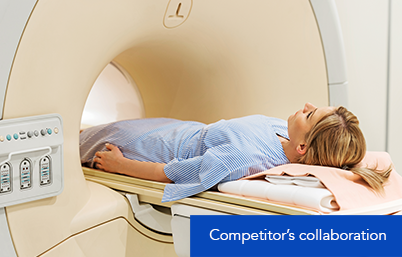
SoRTS
Philips (Netherlands), with their radiation treatment planning solutions, is part of Elekta’s (Sweden) competitive landscape. In SoRTS , however, they worked together: Elekta developed the MR-linac system (Magnetic Resonance Imaging - Linear Accelerator) from MR technology, making it the only MR/RT system that integrates a premium quality (1.5 Tesla) MR scanner, while Philips developed an advanced linear accelerator and intelligently-designed software. The system allows physicians to precisely target a tumour, even when the tumour tissue changes shape, location, size or composition during treatment. Thanks to this, patients can benefit from less intrusive treatment, enabling them to continue their daily lives.



If I had chosen surgery, I could have been out of action for three months or longer, not to mention the complications that can happen with surgery. With radiotherapy, I could still carry on working as usual.
Prostate cancer patient and medical pioneer on 18 September 2018, as he was the UK’s first person to be treated with Elekta Unity MR-linac (Source: https://focus.elekta.com/2019 /03/the-era-of-mr-rt-in-the-uk/)

MOS2S
MOS2S , involving 16 partners from the Netherlands, Belgium, Turkey and South Korea, has created world-first methods and media tools to engage citizens and audiences of live events and reality situations in order to bring engagement and personalised experiences to a higher level. For example, a soccer match was not only played live in Amsterdam but was also watched in real life and real time in Daejeon, South Korea. Viewers were offered an unparalleled live experience thanks to Ultra-Wide Vision technology developed in the project and the use of a special dedicated fibreglass connection. This was the first intercontinental broadcast using this technology, with only a 0.3 second delay.




The MOS2S project has been lucky to cooperate with successful partners from the Netherlands, Belgium, Turkey as well as South Korea. Not only did this allow us to incorporate technology developments from across the globe, but it also allowed us to showcase our innovations at incredible venues and engage citizens and audiences of live events and reality situations in order to bring engagement and personalised experiences to a higher level.
MOS2S Project leader and business consultant for TNO

VMAP
VMAP created a free, open standard for the transfer of material and engineering information between simulations within a Computer Aided Engineering (CAE) process chain. This provides simulation and design engineers with a fast solution for passing information from one calculation to another without needing to create time-consuming one-off interfaces. VMAP will continue the excellent work done on the muchneeded VMAP standard via a legal international association registered in Germany: the VMAP Standard Community (VMAP SC). Future guidance, collaboration, development and maintenance can be effectively managed and encouraged by this open and vendor-neutral association.






The ITEA project VMAP has outstanding outcomes that will speed up the digitalisation process of all industries. By developing standards in virtual engineering, VMAP has pointed out an important need for all industries and their partners; without any standardisation, processes will take longer and solutions will be project-based.
ITEA Chairwoman

SCALARE
The challenge taken up by SCALARE was how to support and enable organisations to scale their software capability in a proactive, systematic way. One of the key outcomes of SCALARE is the Scaling Management Framework (SMF), which enables companies to cope with the transformation challenge of scaling their software capability, as software is becoming a prime factor in delivering innovation and competitive products or services. Customers were involved from the beginning of the project, including Husqvarna, who were able to respond to increasingly demanding customer needs. Husqvarna now has 50 times as many software developers.





In 2013, our software development organisation consisted of a handful of people. Today, it consists of over 200 people. SCALARE has been a major help on this journey.
Project partner and lead architect for the IoT systems at Husqvarna Group
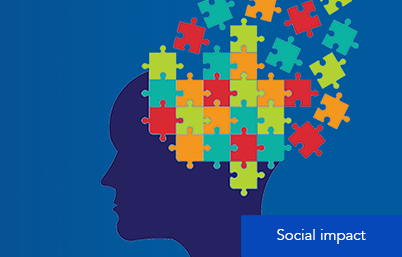
Panacea Gaming Platform
Children with disabilities represent 13-15% of the paediatric population. For the elderly population, this figure is 40%. The incidence rate of autism spectrum disorders, meanwhile, has increased by 600% in the last ten years. When attempting to assist vulnerable individuals while reducing healthcare costs, interventions must be efficient, sustainable and broadly applicable. Panacea Gaming Platform’s (PGP) clinical gamification presents a solution and has completed important foundational work for the serious healthcare gaming industry. PGP’s significance lies in its clinical, personal and societal benefits: the opportunity to bring healthcare to individuals themselves, relieving the burden on hospitals and allowing those with disabilities to personalise their therapy and improve their quality of life.




ITEA has been a particular focus for Canada due to its industry-driven, bottom-up approach with trusted and engaged innovation actors coupled with effective processes. This generates valuable networks and projects with commercial and social impacts.
ITEA Public Authority representative of Canada and Industrial Technology Advisor at the National Research Council Canada
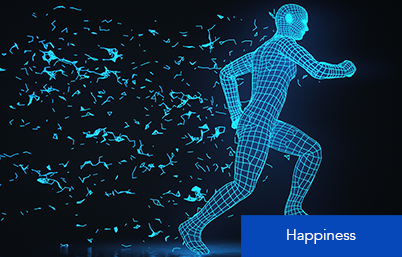
MOSIM
MOSIM created an open-source framework for digital human simulations that can simulate different manual assembly actions and scenarios comprehensively. This dynamic simulation of humans in production – based on predefined motion units with a standardised interface – has the ability to simulate assembly worker tasks in minutes rather than weeks. From identifying ergonomic opportunities during the assembly process to improving worker productivity, safety and training, MOSIM has enormous potential to impact numerous stages of production. The approach helps by eliminating working conditions that negatively impact safety and worker well-being.




This opens up a lot of new possibilities. When you can simulate humans moving realistically through assembly sequences, this provides additional opportunities to investigate optimisation potential in the factory, such as adjusting shelf positions in order to shorten walking paths. It can even be used to provide immersive training for workers on how to complete their tasks.
Technical Coordinator for MOSIM and PhD Researcher at Daimler Buses - EvoBus GmbH

PS-CRIMSON
PS-CRIMSON, a collaboration of six academic, industrial and SME partners from the Netherlands and Canada, developed a unique 3D smart digital model that combines all of the gathered data on one common platform that serves as a single entry point for city representatives. It facilitates data collection, sharing, management, analysis and dissemination from public and private urban infrastructures and resources, thereby improving public safety and disaster management. The PS-CRIMSON partners show a unique complementarity; by offering a complete smart city solution, the project has already won a tender for Smart City Hilversum (Netherlands) which is now being deployed, while similar projects are being implemented in Canada, the United States and China.


Cities all over the world face similar challenges in ensuring a safe, pleasant and sustainable living environment for their citizens. Through this ITEA cross-border R&D&I collaboration, industry standards are set to tackle these city challenges while simultaneously safeguarding the unique identities of cities around the world. The Ministry of Economic Affairs and Climate Policy and the Netherlands Enterprise Agency continue to support these excellent projects.
ITEA Public Authority representative of the Netherlands and Programme Manager at the Netherlands Enterprise Agency GmbH
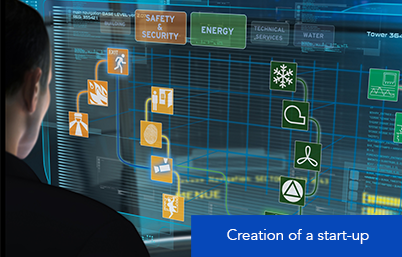
BaaS
BaaS (Building as a Service) introduced a novel semantic IoT service framework for commercial buildings along with a reference architecture and corresponding software platform as a basis for current and future commercial building automation and management technologies. The BaaS approach can serve as a blueprint for stakeholders in future BAS ecosystems. Turkish SME and project partner BOR Software started the project as the smallest SME participant (two people) and now has 65+ employees (50+ engineers). Spin-off companies IOTIQ GmbH, Dakik and ERSTE Software Ltd were founded under the guidance of BOR, inspired by the BaaS knowledge gained and its IoT focus. Bor Software’s name has been changed to ‘IOTIQ Ankara’ and has become a marketing point of the products in the eastern half of the world.




BaaS (Building as a Service) introduced a novel semantic IoT service framework for commercial buildings along with a reference architecture and corresponding software platform as a basis for current and future commercial building automation and management technologies. The BaaS approach can serve as a blueprint for stakeholders in future BAS ecosystems. Turkish SME and project partner BOR Software started the project as the smallest SME participant (two people) and now has 65+ employees (50+ engineers). Spin-off companies IOTIQ GmbH, Dakik and ERSTE Software Ltd were founded under the guidance of BOR, inspired by the BaaS knowledge gained and its IoT focus. Bor Software’s name has been changed to ‘IOTIQ Ankara’ and has become a marketing point of the products in the eastern half of the world.
Project partner and CEO & Co-Founder of Bor Software

ADAX
ADAX aimed to develop advanced capabilities for cyber-attack detection and countermeasure simulation and delivered a set of key innovations improving prevention, detection, decision support, countermeasure enforcement and knowledge management in order to support security operations on complex and critical IT infrastructures. Key developments deriving from the project have resulted in successful exploitation with e.g. more than 12 direct customer contracts and several future applications in security monitoring for smart critical buildings, smart grids and factories of the future. ADAX won the EUREKA Innovation Award 2017 in the category ‘competitiveness’ during the EUREKA Innovation week in Barcelona.


The ADAX project was unique because it addressed cybersecurity in a cost-effective manner. From the start, the involvement of the customer Yapi Kredi drove us to a solution that would fit the market by design. The continuous and constructive mentoring of ITEA from project idea to exploitation, with its business impact-driven approach, helped us to reach the full potential of the project.
ADAX project leader and Head of Research & Technology at Airbus CyberSecurity

3DPathology
3DPathology was set out to create a 3D digital pathology solution for same day diagnosis and much more personalised treatment of cancer. The project’s world first 3D multi-modal pathology demonstrator enables unique features such as access to the microscopic organisation of tissue sub-structures in 3D, providing complete chemical information and access to unexplored dimensions of histology. For Barco, 3DPathology represented the first steps into a new market. Currently, Barco has already sold several hundred optimised display systems worldwide that address a variety of pathology lab needs and, over the next few years, they expect a large increase in the sales of display systems for digital pathology.






3DPathology has been a very important collaborative project for Barco Healthcare. It allowed Barco to obtain a deep understanding of the clinical needs by closely interacting with pathologists and hospitals. Together with the other project partners we have been able to co-design technology & solutions and were able to validate these in realistic international context. By means of the 3DPathology project, Barco has been able to explore and enter the digital pathology market.
VP Technology & Innovation, Barco NV
Other chapters
Use the arrows to view more chapters

Editorial
By Zeynep Sarılar

Enhancing from established roots
Achievements and successes of ITEA 3

Online ITEA PO Days 2021
By and for the ITEA Community

ITEA Success story: ASSUME
Reducing bugs and false errors to boost efficiency
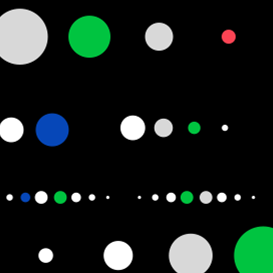
ITEA 4 styling
Fresh, flexible, global and dynamic
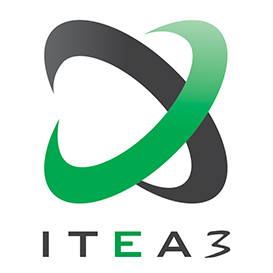
ITEA 3 measured in milestones
Some key moments highlighted

We are ready 4 the future!
The impact plan for ITEA 4

Customers are partners in our mission
ITEA Customer Advisory Boards
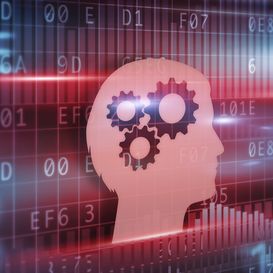
ITEA Success story: Reflexion
Nourishing high-tech manufacturing with valuable high-quality data
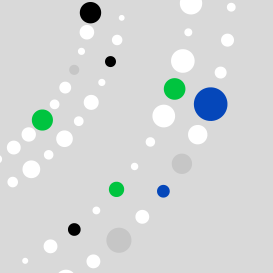
The Eureka Clusters Programme
The connections between Clusters and with Public Authorities create a stronger whole

Smart energy – a new challenge accepted!
Insights on the new ITEA key challenge and the 2021 customer workshop

